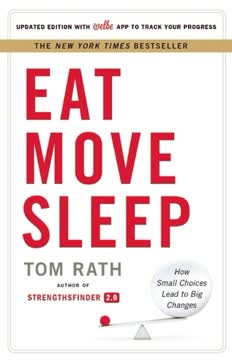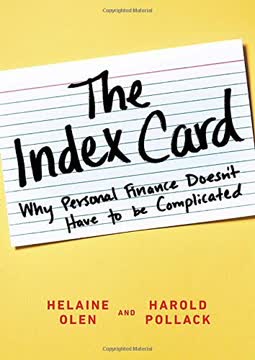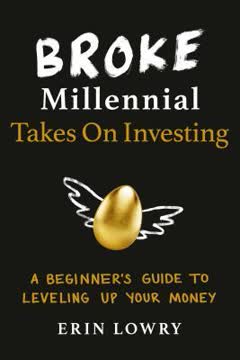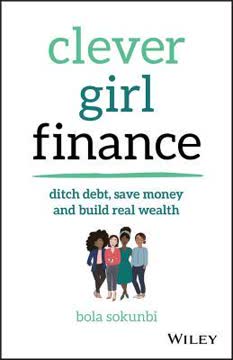Key Takeaways
1. Overcome Fear and Embrace the Side Hustle Journey
Fear is an indicator that you are outside of your comfort zone—but outside your comfort zone is where the magic happens.
Confronting Fear Head-On. Fear is a common barrier to starting or growing a side hustle, manifesting as worries about the unknown, failure, risk, or personal inadequacy. Instead of letting fear paralyze you, acknowledge it, identify its source, and determine the worst-case and best-case scenarios. Develop a plan of action to counter each fear, whether it involves improving skills, seeking support, or reminding yourself of your "why."
Mindset is Key. A positive mindset is crucial for navigating the challenges of building a successful side hustle. Commit to the journey, affirm your capabilities, and get clear on your "why"—the reason you want to succeed. This will fuel your motivation and help you persevere through obstacles.
Preparation for Success. Adjust your schedule to dedicate focused time to your side hustle, and establish accountability partners who will provide support, feedback, and encouragement. By preparing your mindset, schedule, and support system, you'll be well-equipped to tackle the challenges and achieve your business goals.
2. Brainstorm and Refine Your Winning Business Idea
Ideas come a dime a dozen, and the only ones that really count are the ones you actually pay attention to, pursue, and try out.
Generating Business Ideas. Business ideas can arise from various sources, including solving personal problems, leveraging talents and passions, or identifying market opportunities. Don't dismiss any idea prematurely; instead, write it down and revisit it later. Remember that your business doesn't necessarily have to be tied to your passions, but it should be something you're committed to.
Effective Brainstorming. Compile a list of potential business ideas and brainstorm each one individually. Make time for focused brainstorming sessions in a distraction-free environment. Ask yourself questions about the problem you're solving, your target market, and the resources you'll need. Research existing solutions and seek feedback from potential customers.
Vision and Mission. Establish a clear business vision and mission to guide your efforts. Your vision statement outlines your long-term goals, while your mission statement focuses on what you want to accomplish today and in the immediate future. These statements will serve as your "why" and keep you motivated.
3. Craft a Business Plan That Works for You
The foundation of your side hustle’s success starts with a plan.
Business Plan Essentials. A business plan is a roadmap for your side hustle, outlining your business idea, legal structure, target market, products/services, competition, marketing strategy, finances, and goals. It doesn't need to be a lengthy document, but it should be a useful guide that you revisit often.
Key Components. Include your business vision and mission statements, legal entity (sole proprietorship, LLC, etc.), ideal customer profile, product/service descriptions, competitive analysis, marketing plan, financial projections, business goals, and management strategy. This plan will help you make informed decisions and avoid costly mistakes.
Adapt and Evolve. Your business plan should be a living document that evolves as your business grows and you gain new insights. Don't be afraid to make adjustments to your plan as needed to stay on track with your long-term goals.
4. Legally Structure Your Business for Success
As a business owner, it is important to separate the liability of your business from your own personal liability.
Choosing a Legal Structure. Selecting the right legal structure is crucial for protecting your personal assets and ensuring compliance with legal and tax requirements. Common options include sole proprietorship, partnership, limited liability company (LLC), and corporation. Each structure has different implications for liability, taxation, and business opportunities.
LLC Benefits. An LLC provides limited liability protection, shielding your personal assets from business debts and lawsuits. It also offers flexibility in taxation and management. If you are a licensed professional, depending on your state requirement, you may be required to form a professional limited liability company (PLLC).
EIN Importance. Obtain a Federal Employer Identification Number (EIN) from the IRS, even if it's not required for your business structure. An EIN is like a Social Security number for your business and is needed for tax filings, hiring employees, and other legal requirements.
5. Know Your Customer and Deliver Value
When a customer chooses to buy from your business, your goal is to make them happy about their experience and with their purchase.
Ideal Customer Profile. Understanding your ideal customer is essential for building a successful business. Create a customer avatar that includes their demographics, psychographics, pain points, and how your business can solve their problems. This will help you tailor your products, services, and marketing efforts to attract the right customers.
Solving Problems. People buy from businesses that help them solve a problem or satisfy a need. Focus on the value you provide to your customers and how your products/services can improve their lives. Make sure your offerings align with their pain points and deliver a positive outcome.
Customer Experience. Strive to create an exceptional customer experience that will lead to repeat purchases and word-of-mouth referrals. Happy customers are your best advocates, so prioritize their satisfaction and build lasting relationships.
6. Build a Brand That Attracts and Engages
Branding is much more than just having a nice logo.
Brand Identity. Develop a strong brand identity that reflects your business vision and mission. This includes your business name, logo, color palette, typography, and overall look and feel. A cohesive brand identity will make your business easily recognizable and help you connect with your target audience.
Brand Story. Craft a compelling brand story that shares your business's narrative, purpose, and values. Your brand story should connect with your ideal customers on an emotional level and establish trust. Weave your story throughout your website, content, and marketing materials.
Online Presence. Establish a strong online presence with a dedicated website and active social media accounts. Your website should be your home base, showcasing your products/services, brand story, and contact information. Create consistent and valuable content that engages your audience and keeps your business top-of-mind.
7. Master Your Business Finances for Profitability
Staying on top of your business finances is not just to generate revenue; it’s to make sure your profits stay in your pocket!
Startup and Operating Costs. Identify and estimate your startup costs (one-time expenses to get your business running) and operating expenses (recurring costs to keep it running). Categorize your operating expenses as fixed (consistent) or variable (fluctuating). This will help you create a realistic budget and track your spending.
Business Budget. Create a business budget that forecasts your income and expenses. Track your actual spending against your budget to identify variances and make adjustments as needed. Build taxes into your budget by setting aside a percentage of your profits for tax obligations.
Financial Analysis. Perform a break-even analysis to determine how much you need to sell to cover your expenses. Track your profits and losses to identify areas of strength and weakness in your business. Use this information to make informed decisions about pricing, marketing, and product development.
8. Leverage Metrics to Track and Optimize Growth
Your business metrics are basically performance indicators that showcase how well your business is doing.
Key Performance Indicators (KPIs). Track key performance indicators (KPIs) to measure the success of your business. Financial metrics include fixed costs, variable costs, total revenue, average revenue, sales goals, and profit margin. Marketing metrics include customer acquisition rate, conversion rates, new vs. returning customers, and social media engagement.
Data-Driven Decisions. Use the insights you gain from tracking your metrics to make data-driven decisions about your business. Identify what's working well and what needs to be adjusted. This will help you optimize your strategies and maximize your growth potential.
Tools for Tracking. Utilize tools like spreadsheets, Google Analytics, and social media analytics dashboards to track your business metrics. Choose the metrics that are most relevant to your goals and focus on analyzing them regularly.
9. Manage Your Time and Build Your Team
As a business owner, time is one of your most valuable assets.
Time Management. As a business owner, time is a valuable asset. Create a schedule that allocates time for administrative, financial, sales/marketing, customer service, and partnership tasks. Prioritize tasks, delegate when possible, and leverage tools to automate processes.
Team Building. As your business grows, identify areas where you need support and consider hiring contractors or employees. Create clear job descriptions, take your time to hire the right people, and have contracts in place.
Business Peers and Mentors. Build a support system of business peers and mentors who can provide guidance, encouragement, and feedback. Attend industry events, join online communities, and connect with other entrepreneurs to expand your network.
10. Persevere Through Seasons and Plan for Long-Term Growth
Building a business is not easy.
Consistency and Resilience. Building a business is a journey with ups and downs. Stay focused, consistent, and resilient, and pick yourself back up when you fall. Trust the process and remember your "why."
Long-Term Vision. Think long-term and create a plan for growth. This includes setting goals, reinvesting in your business, and diversifying your income streams.
Adapt and Evolve. Be prepared to adapt and evolve your business as needed to stay relevant and meet the changing needs of your customers. Embrace change and view challenges as opportunities for growth.
Last updated:
FAQ
What’s "Clever Girl Finance: Ditch Debt, Save Money and Build Real Wealth" by Bola Sokunbi about?
- Empowering Women Financially: The book is a practical guide designed to help women take control of their finances, build wealth, and achieve financial independence.
- Step-by-Step Side Hustle Blueprint: It provides a comprehensive roadmap for starting, running, and growing a successful side hustle, from idea generation to scaling up.
- Personal Stories and Case Studies: Bola Sokunbi shares her own entrepreneurial journey and includes interviews with other successful women, offering real-life examples and inspiration.
- Action-Oriented Approach: Each chapter includes actionable steps, worksheets, and checklists to help readers implement the advice and strategies in their own lives.
Why should I read "Clever Girl Finance: Ditch Debt, Save Money and Build Real Wealth" by Bola Sokunbi?
- Targeted for Women: The book specifically addresses the unique financial challenges women face, including the gender wage gap and balancing multiple roles.
- Practical, Real-World Advice: It offers clear, actionable guidance on everything from overcoming fear to managing business finances, making it accessible for beginners and experienced entrepreneurs alike.
- Holistic Wealth Building: The book goes beyond just making money, covering mindset, self-care, accountability, and long-term planning for sustainable success.
- Community and Support: Readers gain insights into building a support system, finding mentors, and leveraging networks, which are crucial for entrepreneurial growth.
What are the key takeaways from "Clever Girl Finance: Ditch Debt, Save Money and Build Real Wealth"?
- Mindset is Foundational: Success starts with overcoming fear, building confidence, and maintaining a growth-oriented mindset.
- Planning is Essential: Creating a business plan tailored to your needs, setting clear goals, and regularly reviewing your progress are critical steps.
- Know Your Customer: Understanding your target audience and their pain points is vital for developing products and services that sell.
- Financial Management Matters: Separating personal and business finances, budgeting, tracking expenses, and planning for taxes are non-negotiable for long-term success.
- Consistency and Self-Care: Perseverance, time management, and prioritizing self-care are necessary to avoid burnout and achieve sustainable growth.
How does Bola Sokunbi define and approach the concept of a "side hustle" in "Clever Girl Finance"?
- More Than Extra Income: A side hustle is positioned as a pathway to financial freedom, not just a way to make a few extra dollars.
- Business vs. Gig Work: Sokunbi distinguishes between side gigs (like driving for Uber) and building a business you own and control.
- Potential for Growth: Side hustles can evolve into full-time businesses, offering options and security, especially for women facing wage disparities.
- Mindset Shift Required: Treating your side hustle as a real business from the start is key to unlocking its full potential.
What steps does "Clever Girl Finance" recommend for overcoming fear and building the right mindset for entrepreneurship?
- Acknowledge and List Fears: Identify specific fears holding you back and write them down to confront them directly.
- Worst- and Best-Case Scenarios: Analyze the worst that could happen, then visualize the best possible outcomes to motivate yourself.
- Action Steps to Counter Fear: Develop concrete, small steps with timelines to address each fear, such as skill-building or seeking support.
- Affirmations and Accountability: Use daily affirmations and find accountability partners to reinforce confidence and maintain momentum.
How does "Clever Girl Finance" guide readers in brainstorming and validating business ideas?
- Intentional Brainstorming: Set aside focused time to list and flesh out business ideas, considering your skills, passions, and market needs.
- Research and Feedback: Use Google and other resources to research existing solutions, competitors, and gather feedback from potential customers.
- Customer Avatar Creation: Develop detailed profiles of your ideal customers to ensure your ideas address real problems and needs.
- Iterative Process: Test, refine, and revisit ideas based on research and feedback before fully committing.
What does "Clever Girl Finance" say about creating a business plan, and what should it include?
- Keep It Simple and Useful: Your business plan should be a living document tailored to your needs, not a lengthy, overwhelming report.
- Core Components: Include your business vision and mission, legal structure, target customer, products/services, competition, marketing plan, finances, goals, and management approach.
- Review and Adjust Regularly: Treat your plan as a blueprint to revisit and update as your business evolves.
- Action-Oriented: Use the plan to set clear, actionable steps and track progress toward your goals.
How does "Clever Girl Finance" address branding and marketing for small businesses and side hustles?
- Brand Identity Matters: Develop a cohesive look and feel (name, logo, colors, fonts) that aligns with your mission and appeals to your target audience.
- Craft a Compelling Brand Story: Share your "why" and values to connect emotionally with customers and build trust.
- Online Presence is Essential: Build a website as your home base, supplemented by social media and consistent content creation.
- Multi-Channel Marketing: Utilize strategies like social media, email marketing, collaborations, events, and word-of-mouth to reach and convert customers.
What financial management strategies does Bola Sokunbi recommend in "Clever Girl Finance"?
- Separate Business and Personal Finances: Open dedicated business accounts and avoid mixing funds to simplify tracking and tax preparation.
- Budgeting and Forecasting: Create a business budget, forecast income and expenses, and regularly review actuals versus projections.
- Track Key Metrics: Monitor sales, profit margins, expenses, and other financial indicators to inform decision-making.
- Plan for Taxes and Emergencies: Set aside money for taxes and build a business emergency fund to weather unexpected challenges.
What are the most common money mistakes to avoid, according to "Clever Girl Finance"?
- Overestimating Quick Profits: Don’t assume instant profitability; plan for a ramp-up period and keep your day job if needed.
- Mixing Funds: Avoid combining personal and business finances, which complicates tracking and taxes.
- Neglecting Bookkeeping and Taxes: Stay on top of bookkeeping, plan for taxes, and hire professionals (accountant, lawyer) as needed.
- Ignoring Insurance and Emergency Funds: Protect your business with insurance and set aside reserves for tough times.
How does "Clever Girl Finance" recommend managing time, building a team, and sustaining long-term growth?
- Time Management Tools: Use calendars, scheduling apps, and project management tools to organize tasks and maximize productivity.
- Delegate and Automate: Identify tasks to outsource or automate, freeing up time for high-value activities.
- Build a Support Network: Seek out mentors, peers, and accountability partners for guidance and encouragement.
- Prioritize Self-Care: Schedule regular breaks and self-care to prevent burnout and maintain long-term motivation.
What are the best quotes from "Clever Girl Finance" by Bola Sokunbi, and what do they mean?
- "Fact: You have what it takes to build an incredibly successful business." – A reminder that self-belief is the foundation of entrepreneurial success.
- "Fear is an indicator that you are outside of your comfort zone—but outside your comfort zone is where the magic happens." – Encourages readers to embrace discomfort as a sign of growth.
- "Your mindset is like a muscle you have to keep in shape." – Stresses the importance of continually nurturing a positive, resilient mindset.
- "The road is long, but the journey is exciting, and you are more than capable of achieving your wildest dreams!" – Inspires perseverance and optimism, reinforcing that success is possible with dedication and action.
Review Summary
Clever Girl Finance receives mixed reviews, with an average rating of 3.78/5. Readers appreciate its clear explanations of financial topics and find it empowering for beginners. Many praise its comprehensive coverage and actionable advice. However, some criticize its focus on higher-income examples and basic content. The book's emphasis on women's financial literacy is well-received, though some find the gender-specific approach unnecessary. Readers value its straightforward language and practical tips, making it a recommended starting point for those new to personal finance.
Similar Books










Download PDF
Download EPUB
.epub digital book format is ideal for reading ebooks on phones, tablets, and e-readers.







